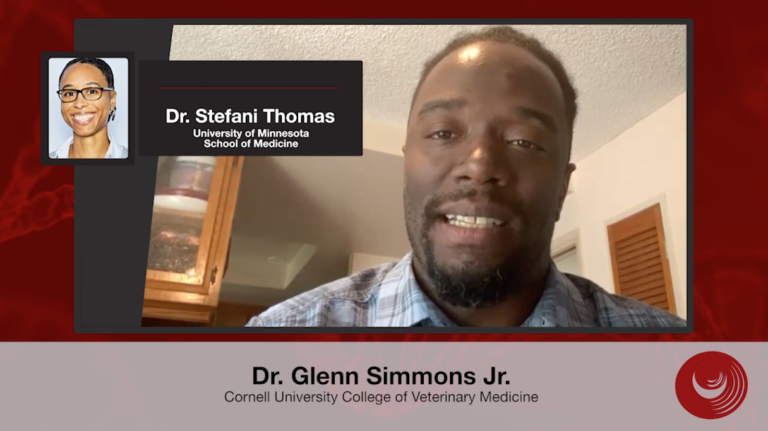Oncoscience | As expected, based on rapamycin-like p53-mediated gerosuppression, mTOR inhibition acts as a checkpoint in p53-mediated tumor suppression
News, Oncoscience
September 12, 2022“SASP is one of the mechanisms of tumor-promotion by senescent cells and is inhibited by both rapamycin and p53 [12, 18–20].”
BUFFALO, NY- September 12, 2022 – Dr. Blagosklonny published a new research commentary in Oncoscience (Volume 9) on August 30, 2022, entitled, “As expected, based on rapamycin-like p53-mediated gerosuppression, mTOR inhibition acts as a checkpoint in p53-mediated tumor suppression.”
Recent work by Gu and co-workers (Kon et al., published in 2021), entitled, “mTOR inhibition acts as an unexpected checkpoint in p53-mediated tumor suppression,” seemingly “unexpectedly” demonstrated in mice that the ability of p53 to suppress mTOR is essential for tumor suppression early in life. This actually was predicted in 2012 in the commentary entitled, “Tumor suppression by p53 without apoptosis and senescence: conundrum or rapalog-like gerosuppression?” [Note: rapalogs are rapamycin analogs.] The commentary was written on another fascinating paper by the same senior author Gu and co-workers (Li et al.), “Tumor suppression in the absence of p53-mediated cell-cycle arrest, apoptosis, and senescence.”
Mutant p53 (p53-3KR), constructed by Li et al., lacking all three then-known tumor-suppressing activities, still suppressed tumors. To be precise, as noticed in the commentary, there were only two, not three, independent tumor-suppressing activities of p53 known at that time: namely, (i) apoptosis and (ii) cell-cycle arrest/senescence. Wild-type p53 does not directly induce the senescent phenotype; it induces cell-cycle arrest, which then converts to senescence (geroconversion) without any p53 assistance.
When the cell cycle gets arrested by any means (by p53, p21 or anything else), the arrested cell is not yet senescent at first. It will take several days (at least) in cell culture to observe senescent phenotype, including large cell morphology, Senescence-Associated Secretory Phenotype (SASP) and beta-Gal-staining. Geroconversion is driven by growth-promoting pathways such as mTOR and MAPK. In fact, rapamycin and anything that inhibits mTOR such as serum-starvation, contact inhibition and anoxia partially suppresses geroconversion and the senescent phenotype.
Then, how does p53 cause senescence? It causes cell-cycle arrest, which, in growth-factor rich cell culture, may automatically lead to a senescent phenotype.
“In analogy, a key to your home seemingly has two activities—unlock the door and open the door. Yet, it only unlocks the door. When the door is unlocked by the key, you (or the wind) may open the door without [the] key. But if an altered ‘mutant’ key cannot unlock the door, it cannot help to open it either.”
Since mutant p53 (p53-3KR) cannot cause cell-cycle arrest, it cannot cause senescence either. On another hand, p53 may inhibit senescence by inhibiting mTOR-driven geroconversion. p53 inhibits mTOR. When p53 causes quiescence (reversible arrest), it does so by inhibiting geroconversion.
“The experimental confirmation is described [5] and discussed elsewhere [2, 9], so I will not discuss it here.”
In agreement with in vitro results, it was shown that p53-null mice have increased mTOR activity, and that observation was confirmed by Kon et al.. Rapamycin also delays cancer and increases lifespan in p53+/− mice.
Kon et al., constructed a p53 mutant (p53-5KR) that is unable to inhibit mTOR. Kon et al., showed that loss of mTOR inhibition led to inability to suppress tumors early in life. This defect was mitigated/reversed by treatment with rapamycin, further supporting the role of mTOR-inhibition in a cancer checkpoint. As shown previously, rapamycin delayed tumorigenesis and extended lifespan in p53-null mice, an observation also confirmed by Kon et al.
As anticipated in 2012, in the absence of rapamycin-like p53-mediated gerosuppression, mTOR favors a senescent microenvironment, associated with cancer promotion. SASP is one of the mechanisms of tumor-promotion by senescent cells and is inhibited by both rapamycin and p53. Rapamycin decreases the ability of microenvironment and tumor stroma to promote cancer growth. Also, mTOR may directly increase pre-cancer/cancer cell growth.
“To keep the focus on the mTOR story, which was unexpected for Kan et al., [1], I did not discuss the fourth anti-cancer activity of p53 discovered by Gu and co-workers: ferroptosis [1, 21, 22]. I still must mention this fascinating story because p53-5KD should be compared with p53-4KD, not with p53-3KD.”
Mutant p53-4KR, which lacks the ability to undergo p53-mediated cell cycle arrest/senescence, apoptosis and ferroptosis, retains the ability to inhibit mTOR activity, while this activity is completely abolished in p53-5KR. This work by Gu and co-workers adds a fourth activity (ferroptosis) to three anti-cancer activities proposed in 2012: cycle arrest, apoptosis and rapamycin-like gerosuppression or, in simple words, mTOR inhibition.
DOI: https://doi.org/10.18632/oncoscience.561
Correspondence to: Mikhail V. Blagosklonny – Email: Blagosklonny@oncotarget.com, Blagosklonny@rapalogs.com
Keywords: senescence, geroconversion, p53, sirolimus, cancer, hyperfunction theory
About Oncoscience:
Oncoscience is a peer-reviewed, open-access, traditional journal covering the rapidly growing field of cancer research, especially emergent topics not currently covered by other journals. This journal has a special mission: Freeing oncology from publication cost. It is free for the readers and the authors.
To learn more about Oncoscience, visit Oncoscience.us and connect with us on social media:
- Twitter – https://twitter.com/OncoscienceJrnl
- Facebook – https://www.facebook.com/Oncoscience
- YouTube – https://www.youtube.com/channel/UCyuhJRF3rNxTJcFhDJ9eK5A
- LinkedIn – https://www.linkedin.com/company/oncoscience/
For media inquiries, please contact media@impactjournals.com.

